Product Discovery: 5 Steps from Ideation to Market Success
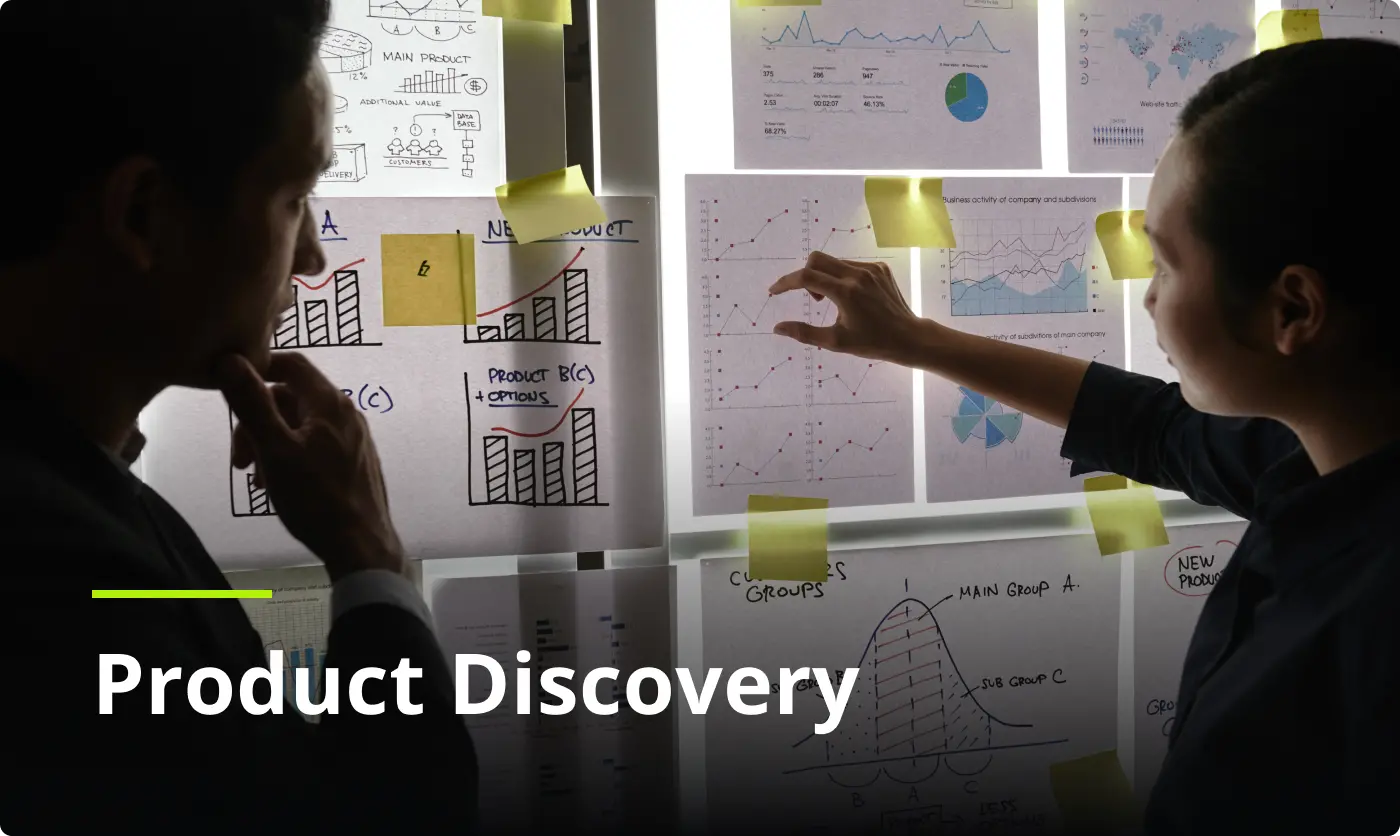
In the ideal world, businesses start the product creation journey with product discovery. They put themselves in the client’s shoes and fairly evaluate if their idea is worth the client’s attention and time. But in reality, things often go differently.
Entrepreneurs are so excited about their product ideas that they rush into the design and development without asking the audience if they need such products at all.
As a result, product teams create solutions that look pretty and work smoothly yet do not address client problems. There are millions of products on the market that users are not interested in. However, they were created by a professional team of designers, managers, developers, and marketers.
The purpose of this article is to help you avoid this scenario and create a solution that your audience will genuinely love. This can be done with a well-planned product discovery process.
What is product discovery?
Product discovery is the process of defining what your target audience needs and how to build the solution they will love. This is the most inspiring part of the product creation. During the discovery process, you identify client pains, generate ideas on how to address them, and come up with the best solution.
Product discovery definition stands for the process of defining the whys of a product, how it helps end-users to solve their problems, and more.
Discovery is helpful for companies that plan to launch a new product, extend the functionality of their solutions, or prioritize new features. Generally, this process helps you figure out the following:
- What client pains or challenges will your product solve?
- How will clients use your product to address these problems?
- How can your product evolve with time and scale?
In other words, the discovery process helps teams define the product type to build, decide if you should make it, and uncover how your audience wants you to build it.
Many people can be involved in the discovery. These include entrepreneurs, product builders, as well as product teams. You can also apply the related focus groups and departments for brainstorming and cross-functional collaboration.
A product manager is one of the leading roles in the discovery. This is a person who continually drives client understanding, makes crucial decisions on product growth, and puts effort into finding the right product-market fit.
Product managers conduct different research types, including product, market, and user research, and leverage the findings at each of the discovery process steps.

Among the typical activities involved in the discovery, we can mention creating a user persona, collecting customer feedback, user journey mapping, etc. The purpose of all these activities is to give your product team a deep understanding of your audience’s needs and help them leverage this knowledge when creating a product.
Some product creators may wrongly think that the discovery should only be conducted at the beginning of the software development life cycle. In fact, you should pay careful attention to the discovery process throughout the entire product creation. When being a user yourself, you probably notice how much our needs evolve.
The same can be said about your audience and their changing needs. To maintain a strong connection with your target clients, you should regularly iterate on your solution space and keep improving it to meet dynamic client demands.
Whether you are a startup owner, an entrepreneur launching a new solution, or a product manager, product discovery will require you to prepare. You should possess niche experience, domain knowledge, and practical expertise to build the product your audience looks for.
Together, you will go through the process of discovery from start to finish and polish your idea before investing in full-scale product creation.
Why is product discovery important?
The finding is a multistep and challenging task to complete, which starts with product discovery frameworks. During this step, you try to figure out what your customers expect from you and how to create a product that will win their hearts.
Investing in the discovery will bring fruitful results in the future. According to a study by Deloitte, companies implementing customer-centric strategies are 60% more profitable than self-centric businesses. Experienced product design companies help their clients tweak the prototype until it’s ready for the following stages.
To conduct the discovery, you should use both soft and hard skills. On the one hand, you should leverage your knowledge of the industry specifics, the sense of the competition, and your understanding of the audience. You will rely on the numbers, figures, and other business data that you collect.
On the other hand, you will also leverage your gut feeling and the ability to be empathetic towards your customers. Only by putting yourself into your client’s shoes will you understand if you build a viable solution. You can even try to dive deeper and anticipate how user needs will evolve with time and what your growth path will be.
Depending on the time when you delve into product discovery, you will focus on different aspects. If you are going to build a new product, your discovery will be centered more on the user’s problems and needs. If you are going to scale the existing product by adding new features, the discovery will be focused on product experience.
As a result of the product discovery process, you will either confirm or deny your idea. This is the discovery that will help you verify your initial premises to ensure you invest your time and money in the right solutions.
Based on the data you collect and the customer-centric research you complete, you’ll be able to validate your ideas and make sure that the problem you are trying to solve truly exists on the market.
At the end of this journey, you will get a holistic understanding of the user’s needs and the value that the suggested solution will deliver. With this knowledge at hand, you will find more ways to maximize impact on the market and attract a broader audience.
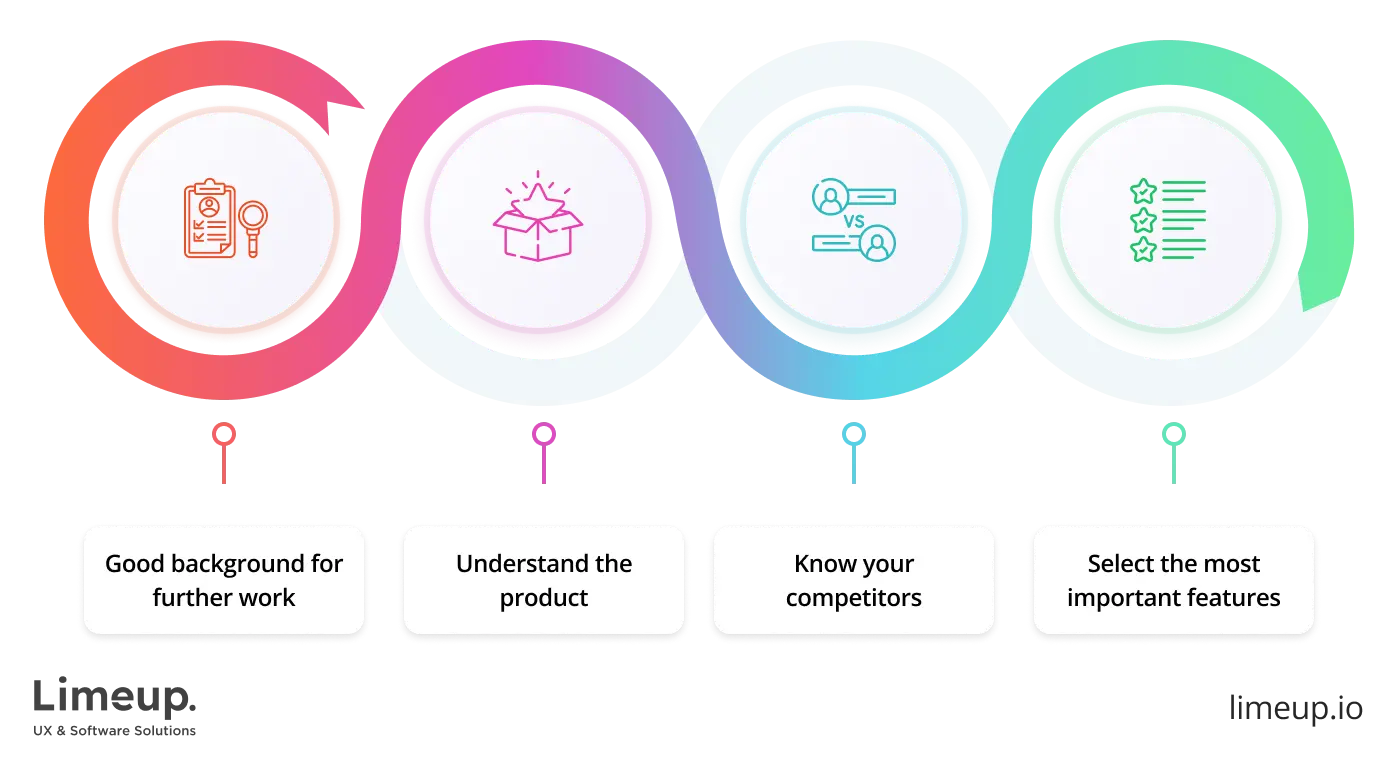
So, by conducting a discovery, you can achieve the following results:
- Prioritize the features. You will invest only in the relevant feature idea and figure out what product features are a top priority for your audience.
- Validate initial assumptions. With the discovery process, you will validate or disprove your ideas by getting a clear picture of your audience, customer needs, and the market.
- Mitigate risks. By conducting discovery, you will prevent the waste of valuable resources and forecast possible risks further to mitigate them with no damage to the project.
- Empathize with your clients. You will center the product management and creation around your clients and their needs instead of relying on pure assumptions.
- Bring innovation to the landscape. You will come up with a unique and novel solution to customer pain points that will help you outstand the competition and make client life easier.
- Identify things to improve. When your idea has the potential to win the market, you may need to enhance it to meet the demands and regulations, which is also done with discovery.
You may wonder what would happen if you skipped the discovery part. One of the possible scenarios is well-demonstrated in the case of Quibi, a short-lived streaming platform startup.
Quibi was designed for on-the-go viewing of high-quality TV shows lasting for approximately 10 minutes. The user had the option to view the context either horizontally or vertically. The audience was provided with all the conveniences of a streaming app.
It seemed that nothing could go wrong with this intuitive and bug-free streaming solution. But just 6 months after launch, it ended up with hardly any users. The project shut down soon after this happened. The question arises: what could cause the failure of this promising project?
Among the reasons why Quibi crashed, The Verge mentions the lack of insight into client behavior and the ways people use their devices. Indeed, skipping the discovery part leads to information gaps about client needs and expectations.
If product discovery were conducted thoroughly in the case of Quibi, their team would find out that the audience needed other features in the product or another product type.
It demonstrates that no matter how good your product is, putting an irrelevant idea at the core of a product will lead to failure. That’s why the beginning of product development is so important.
Get in touch with us if you are looking for a product design company. Once you fill out the contact form on our website, we’ll be in touch with you to discuss your project needs and define the next steps.
5 steps of the product discovery process
If you are wondering how to do product discovery, we will cover your requirements in this part of the article. When it comes to discovery, there may be two strategies to choose from. The first is to use the defined framework for discovery and strictly stick to the plan.
The second is to opt for a more flexible approach and adjust discovery to your needs and the peculiarities of your future product. This approach allows you to experiment with product discovery techniques, methodologies, activities, etc., to get the best outcomes.
As adopters of the second approach, we prepared the plan that can lay the foundation for your discovery. But you will change, remove, and add the steps depending on the type of organization, the project scope, the product type, etc.
When working on product discovery, keep in mind that it’s not meant to be a linear process. Here is an example. Suppose that you have an idea for a specific product feature. After collecting the data, it turns out that your assumptions about this feature idea are incorrect.
Instead of moving to the next steps, you should turn back to the previous one and repeat the process of ideation, no matter how much work has been done yet.
Before we move to discussing each step in more detail, there’s one more thing worth emphasizing. No matter what discovery approach you choose, you should cultivate close collaboration between your teams to get the best result.
Your product, marketing, software development, and BA teams should work closely to get a 360-degree view of the product’s prospects and market demands. If you want to strengthen your product team with people creating inspiring and easy-to-use interfaces, hire the professionals. Together, you will do your best to align your product vision with the client’s needs and tastes.
At some point, you may also refer to your customers. When you speak with your audience directly and ask the right questions, you better understand what is meant by each user persona and internalize user pain points. Now, it’s time to move to the discussion of the key stakeholders in the discovery steps and overview each stage more precisely.
Step 1: Define the user problems to solve
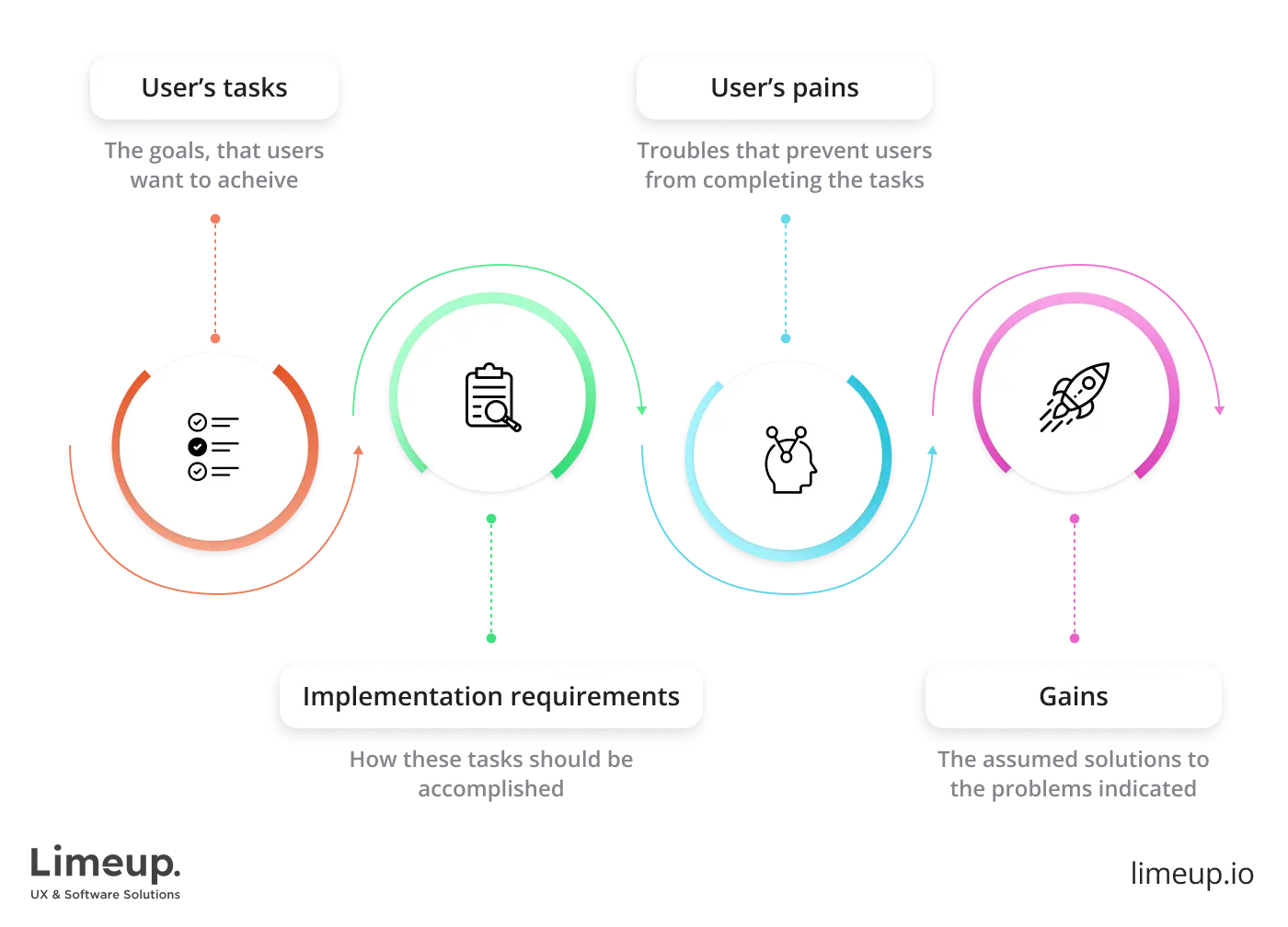
The very first stage of product discovery is focused on user problems. To complete this step successfully, you should change the angle of thinking. Instead of seeing your business from your perspective, try to put yourself in the client’s shoes. It will be the product discovery framework, which means the very first step.
Do not think about the goals that you wish your customers to pursue. If you do so, it’s a clear sign that you should explore user behavior deeper and get more knowledge of your target group.
You should understand the motivation that drives the audience to choose your product. In this context, reasoning like “it’s great” or “it’s aesthetically appealing” does not work and does not motivate users to purchase your product or service. Such reasoning works in combination with the main one, demonstrating how your product satisfies customer needs.
To find out what user problems you can solve, conduct research and observe your customers. Figure out what their day looks like, what their user habits are, what unsolved problems they encounter, etc.
You can involve different research methods in this step of product strategy. For instance, conduct user interviews, analysis of the competitive landscape, observation research, market research, surveys, and others.
Among the most effective methods of exploring your audience, we can mention four research types. Attitudinal research is focused on understanding the attitudes of the audience.
Behavioral research helps businesses dive into user stories and behavior. In turn, quantitative analysis is collecting figures and measurable data to study a problem. Last but not least, qualitative research is aimed at determining the reasons behind the figures, numbers, or different behaviors of a user.
After you collect enough data implementing different research types, formulate a hypothesis around the problem. Use the following questions to guide your answers:
- What is the problem that the audience faces?
- Who is the audience facing this problem?
- How many people encounter this problem?
- What are their demographics?
- In what way are they solving this problem so far?
Step 2: Suggest and ideate the solution
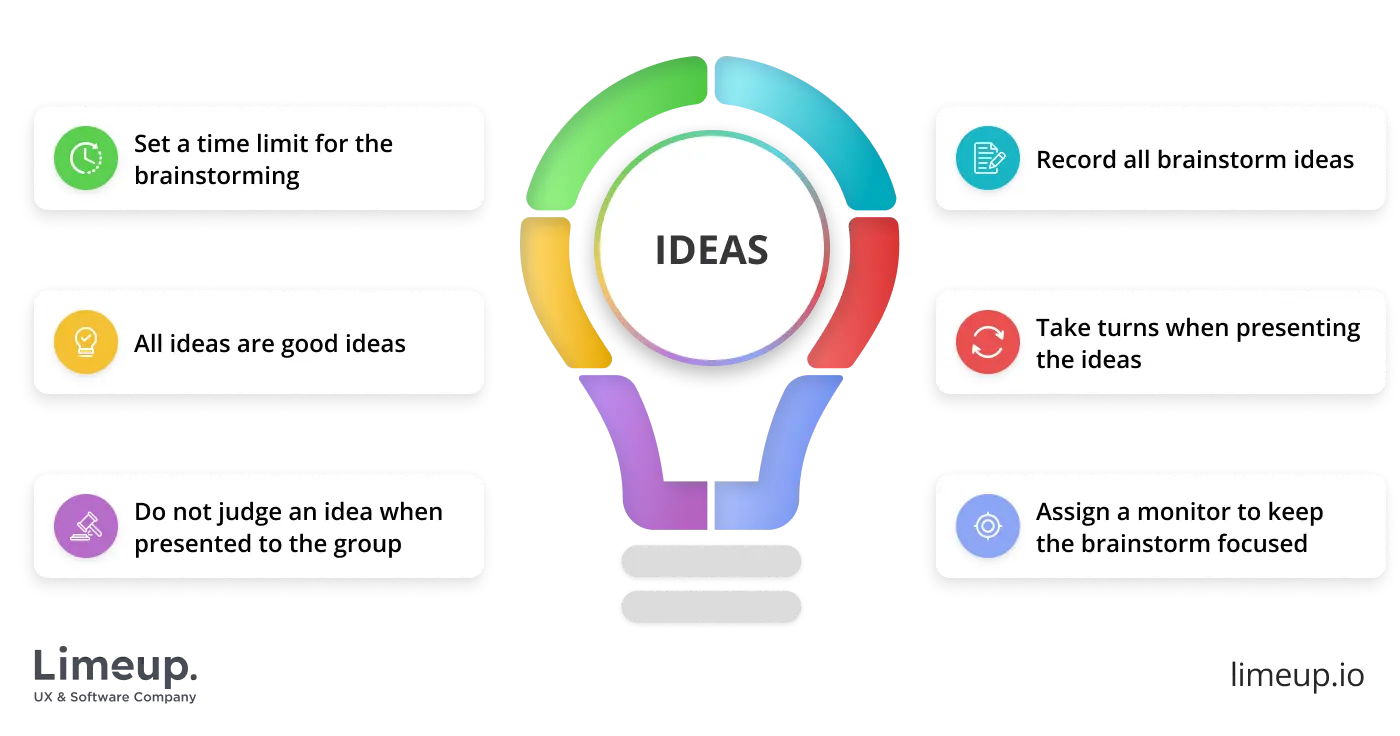
After you make up the hypothesis, the subsequent product discovery phases stand for finding the solution to the user problem and ideating your product. Step 2 involves a lot of brainstorming by you and your product groups. After the brainstorming sessions, select the best ideas and incorporate them into your main product plan.
You can use the questions below to set a practical solution space for your product:
- What does the audience dislike about the current problem?
- Were there any attempts by other businesses to solve this problem?
- What’s the result of their effort?
- How will your product solve the problem?
- Why will your audience use the product?
- How will you monetize the product?
- What value does your product bring to the audience?
Answer the questions by brainstorming ideas, doing mind mapping or storyboarding, etc. Then, sort out and prioritize the ideas on your list.
Having all this information at hand, try to nail down the product description into one or two sentences that will guide your product team through the rest of the steps. Try to be precise and unbiased for everyone to understand the message in the same way.
Step 3: Create a prototype
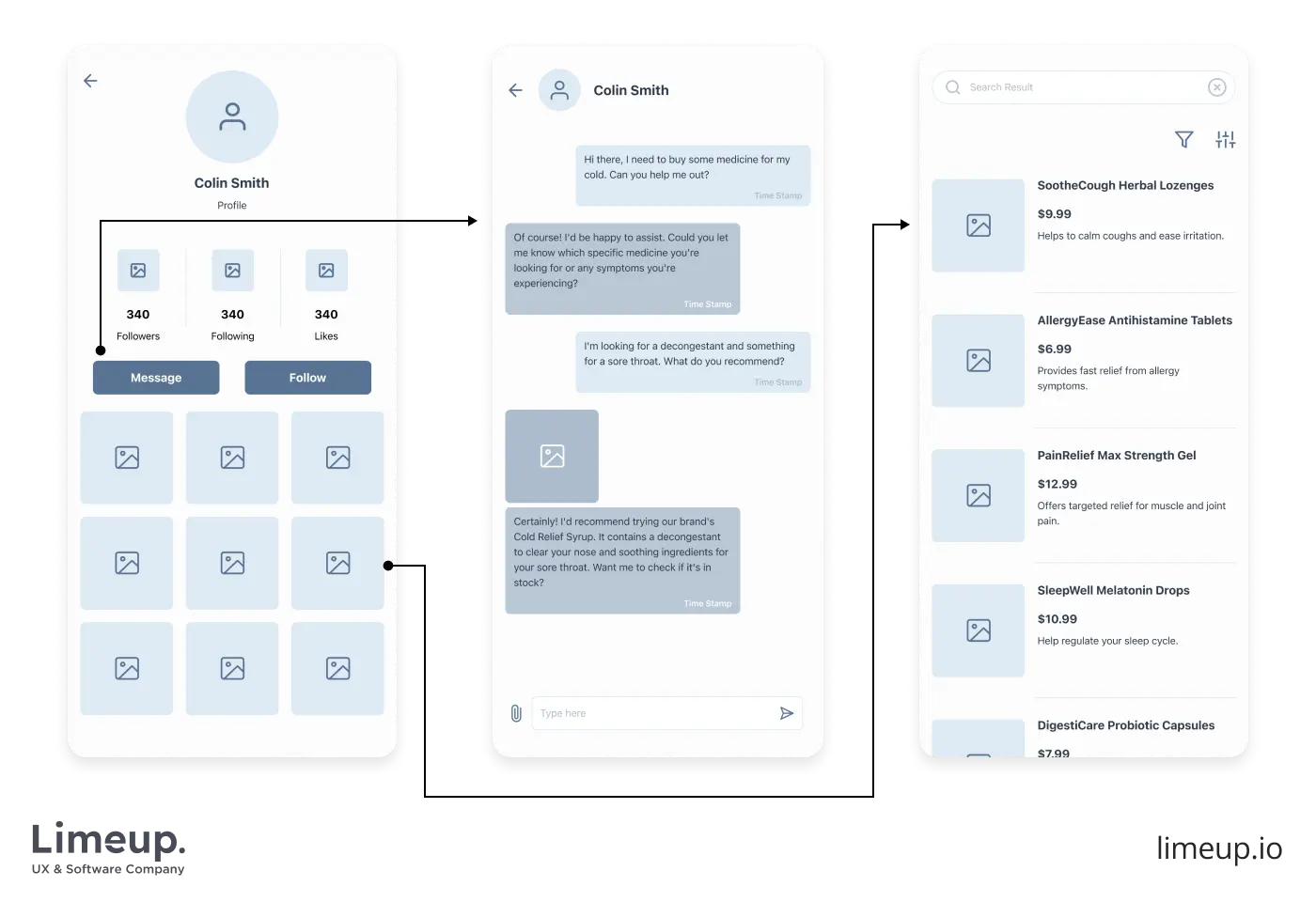
By answering the questions above, prepare the product roadmap and move on to creating a prototype. A prototype is a basic version of your product created to test your idea or concept.
There are different types of prototypes to choose from: mockups, clickable prototypes, a minimum viable product (MVP), and others. Choose the one based on what you are trying to learn from the prototype, the time you can devote to creating it, and your budget.
If you are not sure what kind of prototype will be enough to answer your questions, consider hiring a product design company in the UK. This region is known for its rich expertise in information technology and product creation. A trusted vendor will help you efficiently bring your idea to life and prevent waste.
Since a prototype is not the final version of the product, you still have room for experimentation and creativity at this product discovery stage. As a result of the prototype creation, teams rely on a sample or model illustrating what a product will basically look like and how users will interact with it.
You should keep in mind that creating a prototype is never a linear process. It’s iterative and requires the team to rely on each other, share user feedback, experiment with the approaches, assess the product’s feasibility, etc. You will often look back at what’s done and try to improve it to get better results in the future.
Contact us if you are looking for a reliable product design company that can design impactful digital products. At Limeup, we are ready to help you with your design challenges.
Step 4: Test it

Now, it’s time to test your prototype. Use different testing methods and collect user feedback on your product. The customer feedback will help you improve the suggested solution, enhance its usability, and satisfy more customer needs in one product.
The testing phase will help you make sure that you invest your time and valuable resources in the right solution. This product discovery phase is tightly connected with the first step, where you conduct research on your customers. During step 4, you practically test if your data-driven hypotheses work well in real life and if your customers behave as predicted.
If the tests you conduct confirm the initial hypothesis, you can start the full-scale development process. Consider hiring one of them if you are looking for expert help.
Step 5: Refine and validate the plan
At this final step of discovery, you should get a clear understanding of the product you will build. During the previous step, it may turn out that some of the features are unnecessary for a user or that some elements complicate the user’s journey. All this should be taken into account when refining the final version of the product.
So, your task is to collect feedback from the testing phase and incorporate the valuable insights into the product’s plan.
Improvements made during the refinement phase can save you a fortune. Indeed, redesigning the product post-launch will take a lot more time and actual team effort than enhancing the product at the halfway point. Overall, the purpose of this step is to finalize discovery with insightful information, functional enhancements, and valuable discoveries.
Although this is the final step on our list, the list of discovery steps is not exhaustive. You can experiment with different discovery methods and add more creativity to the process. For example, try A/B testing, usability testing, user interviews, jobs-to-be-done framework, and more.
Each particular discovery case brings insightful and applicable data, whereas the discovery practice, in general, establishes the learning environment within your organization. It teaches product teams to improve the product consistently and incrementally and always keep pace with the evolving client needs.
Benefits of product discovery
If you are wondering why you even have to discover product planning, we have prepared some pros of having a step-by-step defined process.
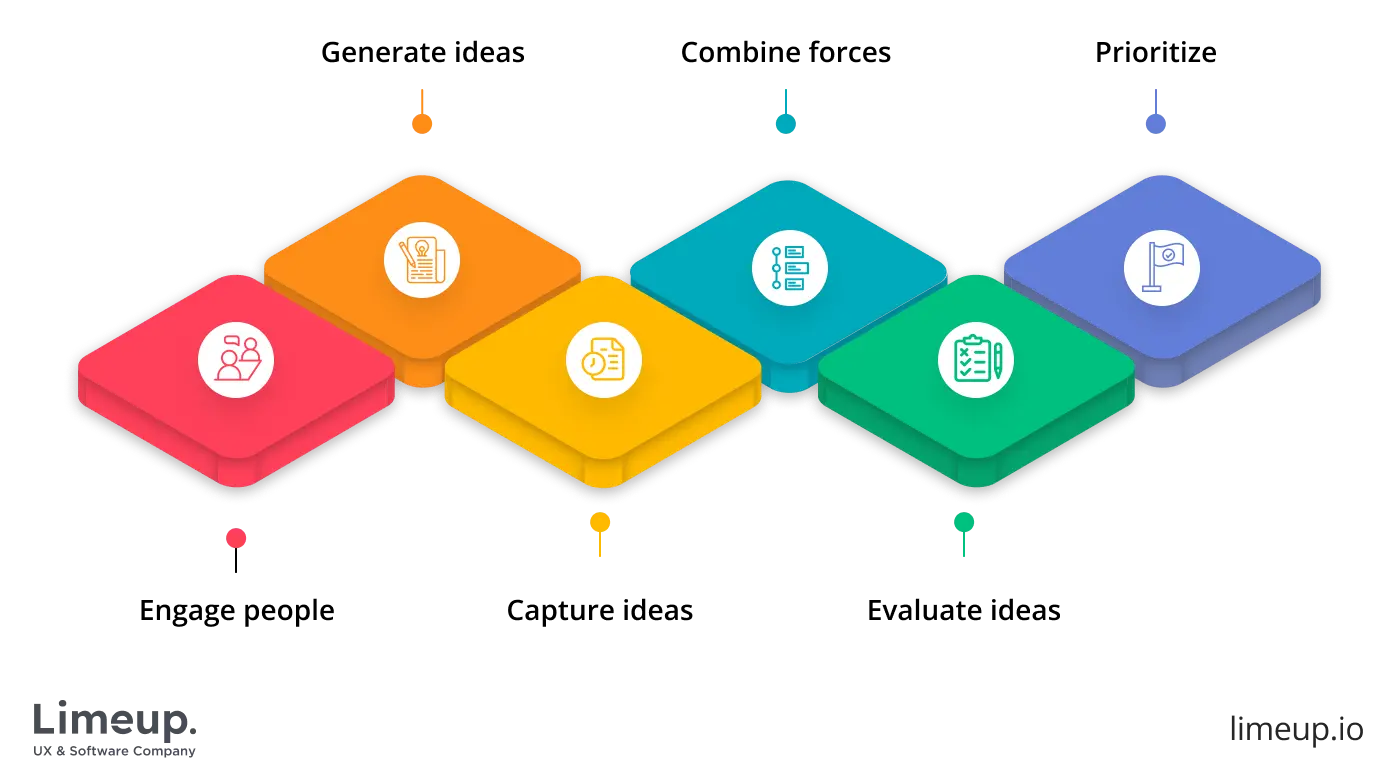
- Making more careful and well-thought-out decisions. Specifying your project needs and overall product discovery helps teams to determine what is essential for your product and end-users, what they expect to receive, how in-demand a product will be on the market, and more.
- Stay ahead of the competition. Meanwhile, you should also be aware of the competitor’s product strategies and keep your business forward. If you need help with discovery planning and implementation, refer to a trusted company offering product design services.
- Better risk management. With a straightforward discovery process, you are able to prevent various risks related to your product.
- Better target group understanding. Within discovering your product, you will be able to receive insights about your users’ problems and more profoundly understand their pain points and why they will use your product.
- Faster product delivery. Empower your project with fast delivery since you will pre-define all the crucial points of your product development.
We have named only the most essential benefits you can receive. For now, you can better understand your product and know what to expect from discovering your needs and capabilities.
Helpful tips for an effective product discovery
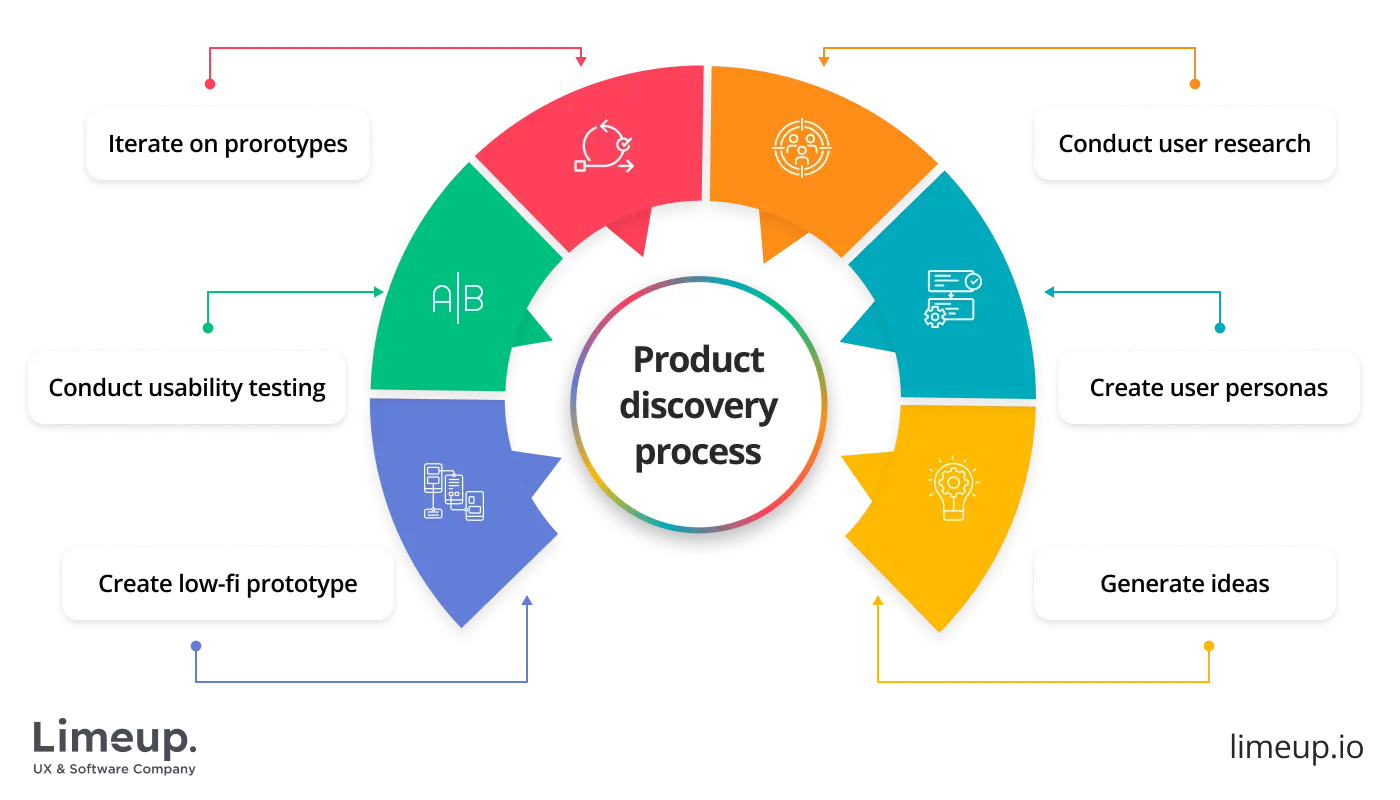
Whether you conduct discovery for a new product or try to improve the existing one, you should stick to the four rules in order to make the process effective. These are the following:
Make it habitual
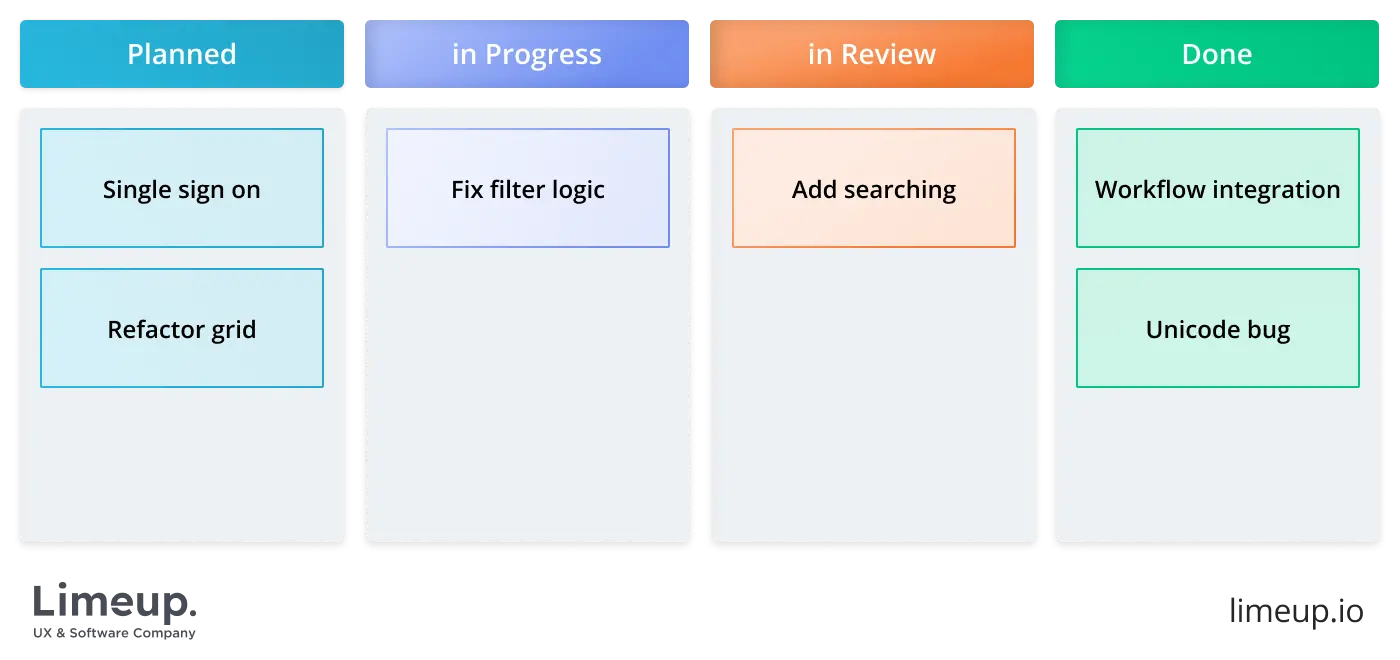
Lack of flexibility is one of the biggest challenges that projects face. It’s also one of the reasons why people move from waterfall methodology in favor of agile methods like Scrum or Kanban. Lack of project flexibility has an adverse impact on discovery as well.
At the beginning of the project, product teams spend a lot of time on intense research and collecting data. However, once the initial phase ends, a team has no time and resources to conduct the research repeatedly.
Long-term projects may last for months, if not years. The data collected at the very beginning can lose its relevance, and the development team will lack understanding of the current situation. In that case, the team will have to repeat the discovery.
If the chosen methodology doesn’t allow this to happen, there is a risk of building a product that is out-of-date and irrelevant.
To mitigate this risk, make discovery a continuous process. Discovery is not just the process of establishing the ground for design and development. It’s the process of continuously discovering how your users see the product, how they interact with it, and how to keep them engaged with your solution.
Apply dual-track agile
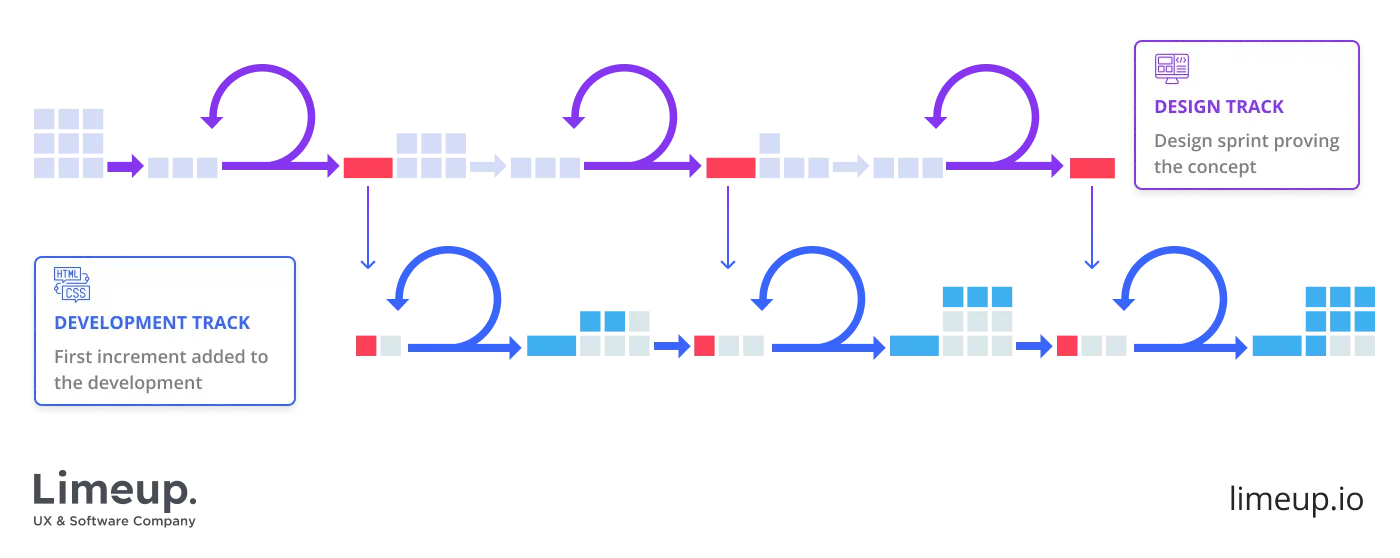
To achieve your goals, you can apply the dual-track technique, which is a part of agile methodology. According to this technique, the product delivery and discovery processes unfold in parallel. Dual-track agile helps product teams make sure that they build the right features in real time. Let’s discuss the technique in more detail.
Under the dual-track method, you create two separate tracks in the task and product management software you use. There is the discovery track and the delivery track.
The discovery track is dedicated to generating, testing, and approving new ideas. The delivery track is the common one that you use to track the work progress. It’s focused on the creation and implementation of the product pieces.
Under this technique, the critical roles in the designing process are assigned to technical leads and product designers, for example, a product design company in London. Together, they brainstorm ideas and conduct some discovery work on the small aspect of the product.
The discovery results are then recorded in the discovery track and shared with the rest of the team. If the team decides that the new changes or enhancements increase the product’s business value, these are then moved to the product delivery track and included in the next sprints.
Dual-track agile helps you get customer feedback continuously without interrupting product management and creation. The data and valuable insights collected during the discovery guide your decisions during the product delivery, which helps you create the product your clients will love.
Together, the delivery track and discovery track combine into the uninterruptible cycle of work where discovery data feeds the delivery, and the delivery processes inspire the team for product discovery.
Think as if you are a client

The process of discovery will help you align your product vision with the way clients see your solution. By putting yourself into the client’s shoes, you will better understand what messages to use to attract their attention.
This tip is handy at the stage when you conduct user research and get the chance to talk to your audience.
When communicating with your potential clients, pay particular attention to the words and phrases they choose to describe your product or the products alike. Incorporate these phrases into your messages to make sure that you and your customers are on the same page.
Encourage cross-functional collaboration

Involve people with diverse skills in the product discovery process. It will help you view your product from different angles and come to the best solution for the client’s needs. Skipping the discovery part may result in additional risks, including:
- Usability issues (occur when a solution is complicated to use or is not intuitive)
- Lack of value (value risk occurs when there are many similar products on the market, and you don’t differentiate with the help of a unique value)
- Viability risks (the idea for a product is not viable, and users do not need such a solution, which also means profit risks for your company)
- Feasibility challenge (happens when the team lacks competencies or skills to build the product you wish)
To address the risks, you should apply a comprehensive approach by involving cross-team collaboration. The must-have roles include:
- A product manager will discover how to make the product valuable for the client and build the things users are interested in.
- A product designer who will take care of the intuitiveness of the solution and eliminate the usability risk. Consider the decision to hire a product designer if you seek quality design services facilitated by expert support and affordable pricing.
- Software developers who possess enough expertise to build engaging and future-proof features and ensure the product’s security and good performance.
Out of this list, software developers are less likely to be involved in the product design process. However, you should not underestimate their role in brainstorming ideas. They often have vast experience creating products for different niches.
By blending diverse skills in one team, you will build empathy with your audience and demonstrate the importance of each employee’s contribution to the common goal.
Summing up
In this article, we guided you through discovery, from defining user problems to validating the idea of the further product. In the meantime, we also shared our most effective tips on how to facilitate the process and help you get the best results possible.
You can use our article as a ground for creating your discovery in consideration of your business needs, peculiarities, and objectives.
In case you need help with the practical one, do not hesitate to contact our team. As an experienced product design company, we know how to turn remarkable ideas into no less remarkable products that will win the user’s heart and bring you profit.



